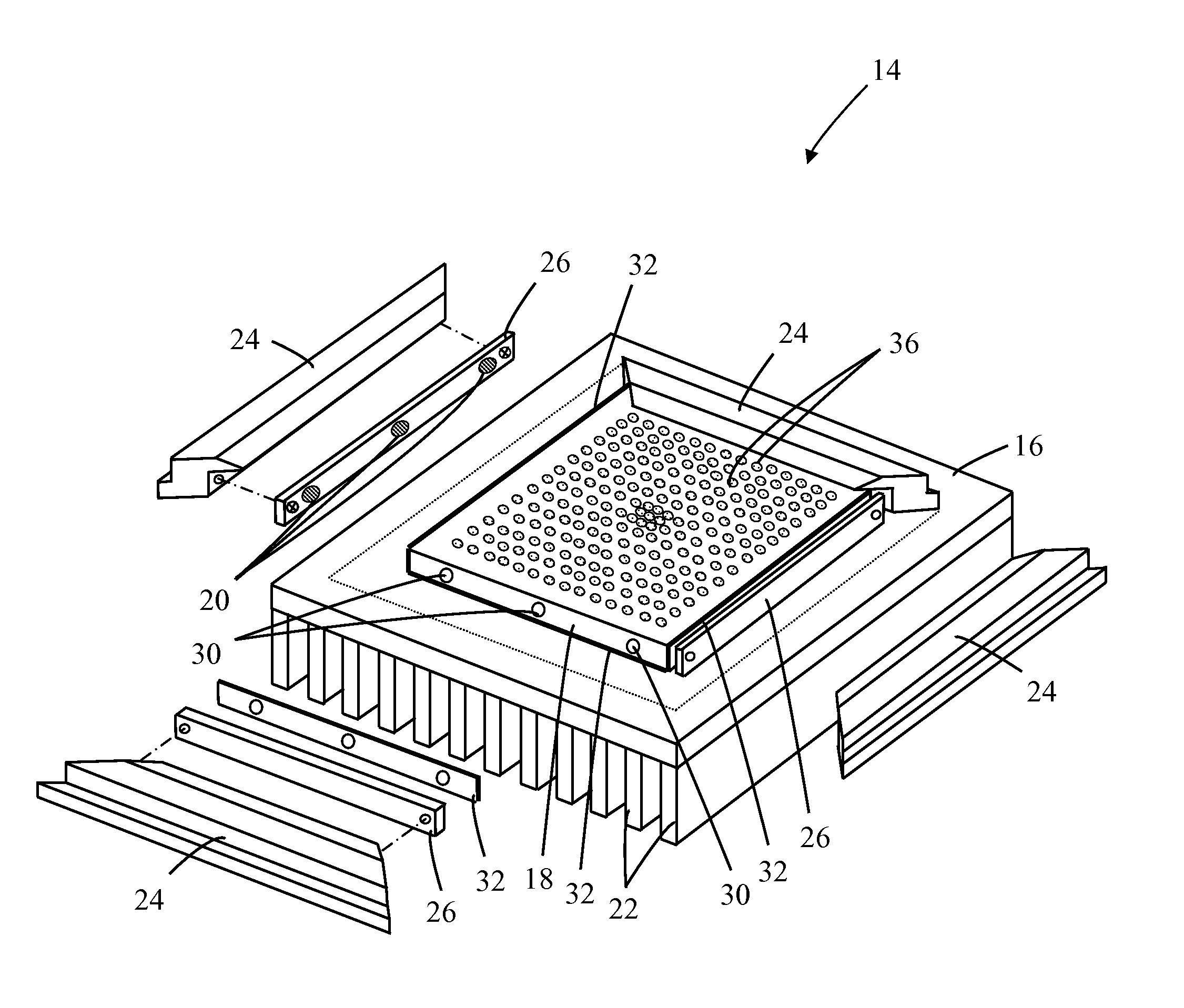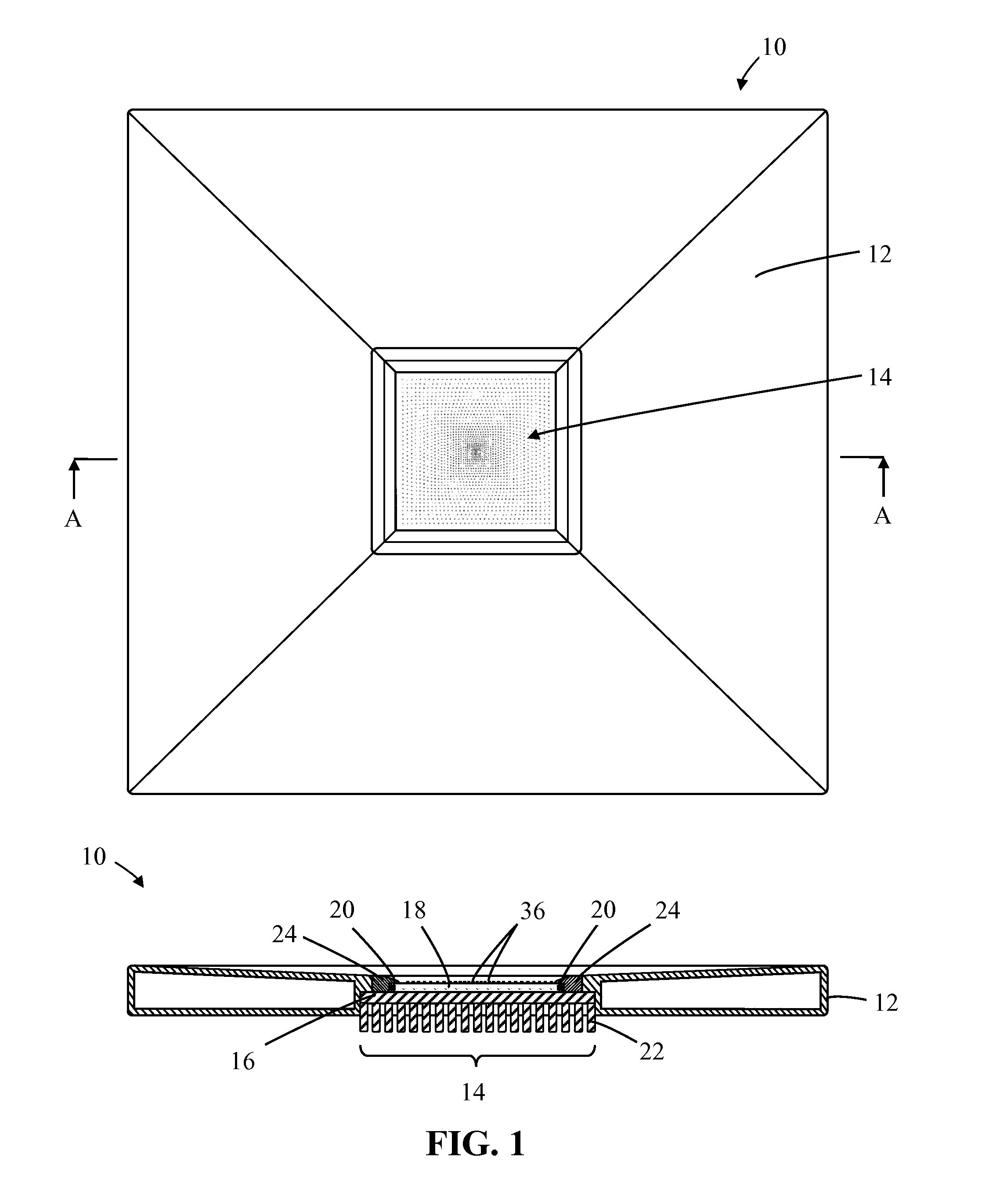Solid-state lamps with light guide and photoluminescence material
- Summary
- Abstract
- Description
- Claims
- Application Information
AI Technical Summary
Benefits of technology
Problems solved by technology
Method used
Image
Examples
Embodiment Construction
[0052]Embodiments of the invention concern solid-state lamps comprising a light guiding medium (light guide or waveguide) having at least one light emitting surface in which light is coupled into the medium such that it is guided, by internal reflection, throughout the volume of the medium. The light guide includes a pattern of light extracting features on at least one surface and / or face, from which light is extracted from the light guide and emitted as the final light emission product.
[0053]The light extracting features may be integrally formed onto the light guide material, e.g. by molding certain structures into the light guide from which light maybe extracted from the light guide. In addition, the light extracting features may be formed by treating the surface of the light guide at specified locations. For example, the surface of the light guide may be treated by removing materials from the light guide surface, modifying the property of the light guide material, or depositing a...
PUM
 Login to View More
Login to View More Abstract
Description
Claims
Application Information
 Login to View More
Login to View More - R&D
- Intellectual Property
- Life Sciences
- Materials
- Tech Scout
- Unparalleled Data Quality
- Higher Quality Content
- 60% Fewer Hallucinations
Browse by: Latest US Patents, China's latest patents, Technical Efficacy Thesaurus, Application Domain, Technology Topic, Popular Technical Reports.
© 2025 PatSnap. All rights reserved.Legal|Privacy policy|Modern Slavery Act Transparency Statement|Sitemap|About US| Contact US: help@patsnap.com



